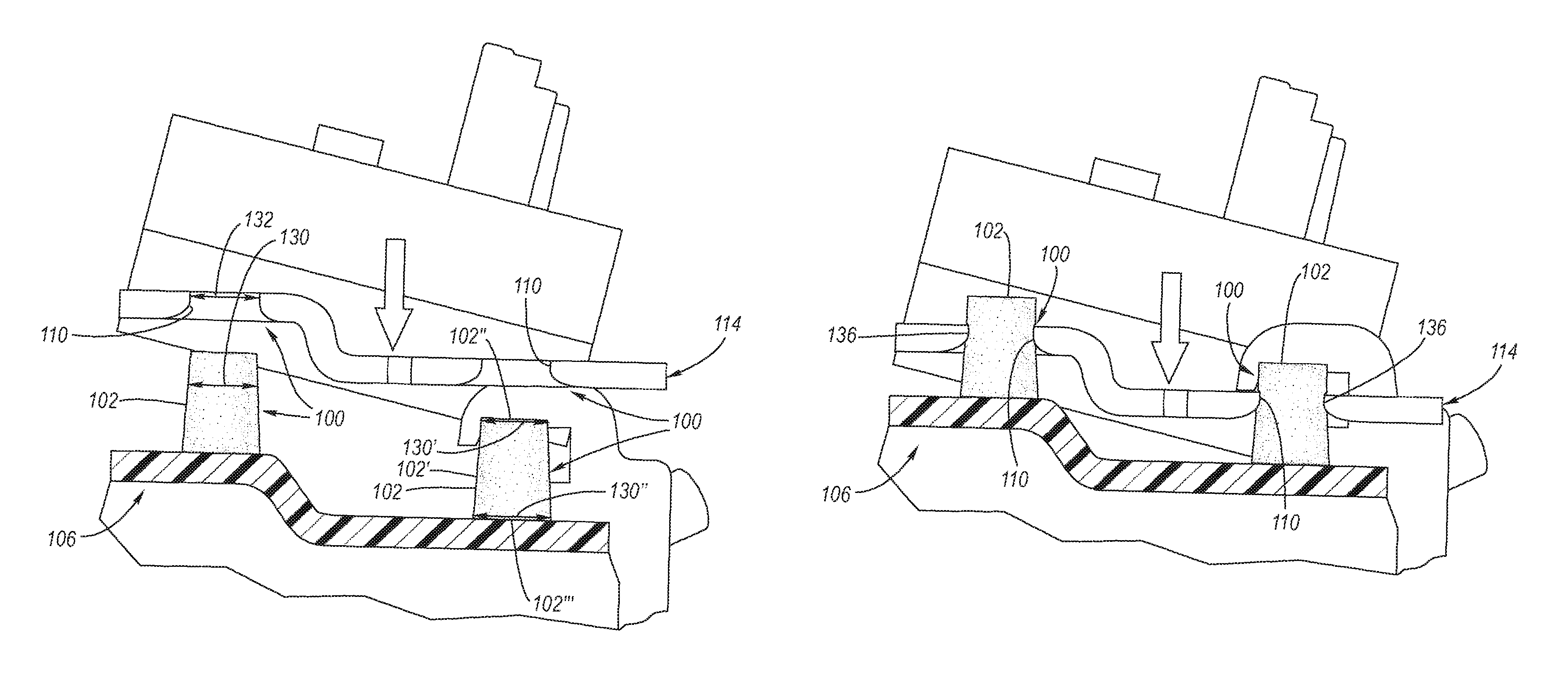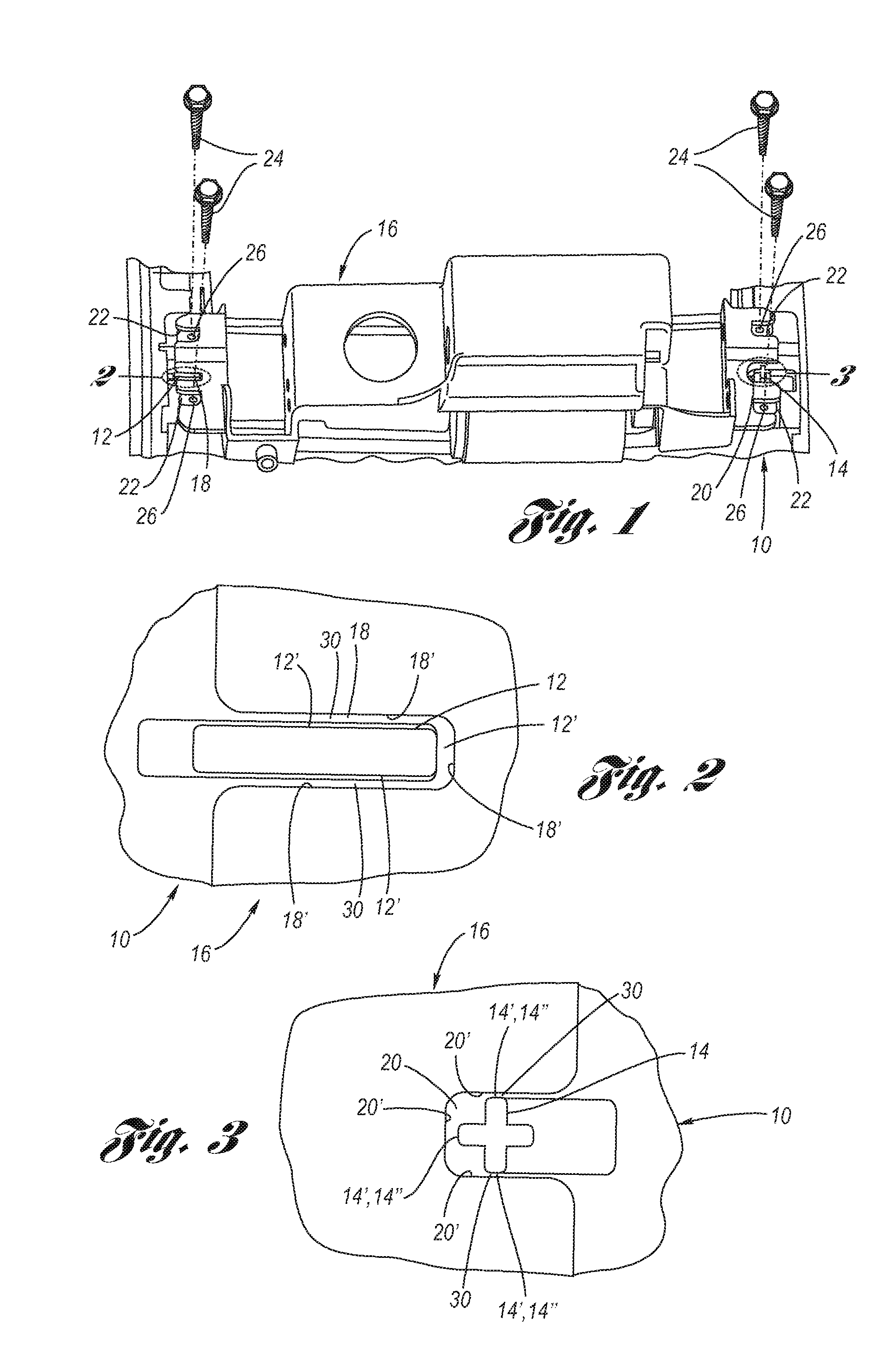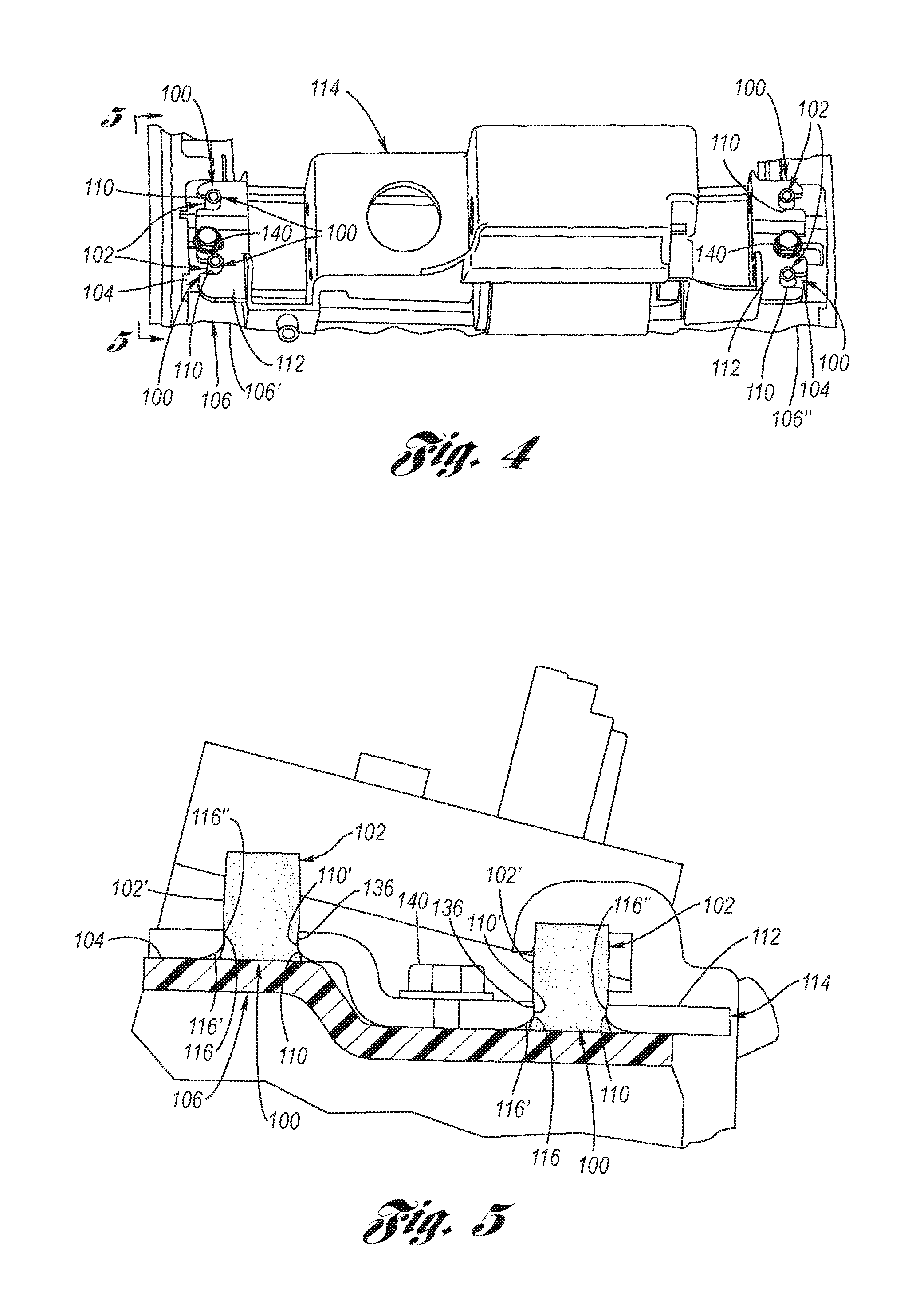Elastic tube alignment system for precisely locating components
a technology of precisely locating components and elastic tubes, applied in the direction of threaded fasteners, screwdrivers, manufacturing tools, etc., can solve the problems of unbalanced appearance, large float, poor fit, etc., and achieve the effect of increasing height, smooth and easy operation, and facilitating initial entry
- Summary
- Abstract
- Description
- Claims
- Application Information
AI Technical Summary
Benefits of technology
Problems solved by technology
Method used
Image
Examples
Embodiment Construction
[0031]Referring now to the Drawing, FIGS. 4 through 14 depict various examples of the structure and function of the elastic tube alignment system according to the present invention.
[0032]Referring firstly to FIGS. 4 through 8, the general principles of the elastic tube alignment system 100 according to the present invention will be detailed, wherein the elastic tube alignment system operates on the principle of elastic averaging.
[0033]A plurality of mutually separated elastic tube alignment features (serving as male alignment features) 102 (hereinafter referred to simply as “elastic tubes”) are disposed on a first surface 104 of a first component 106. As best shown at FIG. 5, the elastic tubes 102 are upstanding in normal relation to the first surface 104, wherein a mutually separated pair of elastic tubes is disposed at both a left end 106′ and a right end 106″ of the first component 106. Each of the elastic tubes 102 is tubular in shape, having a tube wall 102′. Preferably, the tu...
PUM
| Property | Measurement | Unit |
|---|---|---|
| diameter | aaaaa | aaaaa |
| elastic deformation | aaaaa | aaaaa |
| elastic | aaaaa | aaaaa |
Abstract
Description
Claims
Application Information
 Login to View More
Login to View More - R&D
- Intellectual Property
- Life Sciences
- Materials
- Tech Scout
- Unparalleled Data Quality
- Higher Quality Content
- 60% Fewer Hallucinations
Browse by: Latest US Patents, China's latest patents, Technical Efficacy Thesaurus, Application Domain, Technology Topic, Popular Technical Reports.
© 2025 PatSnap. All rights reserved.Legal|Privacy policy|Modern Slavery Act Transparency Statement|Sitemap|About US| Contact US: help@patsnap.com



